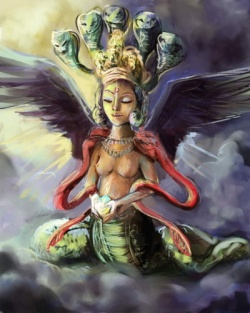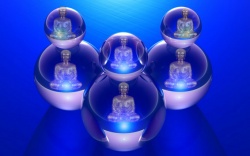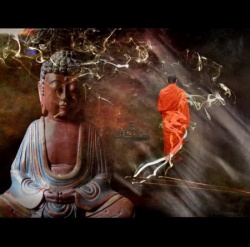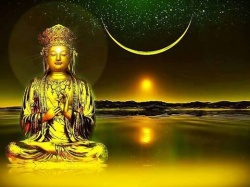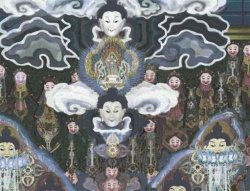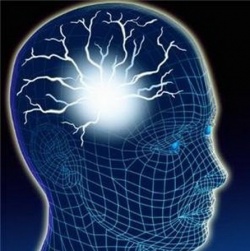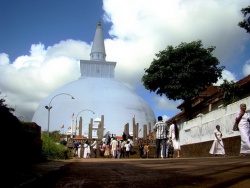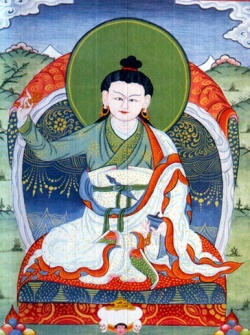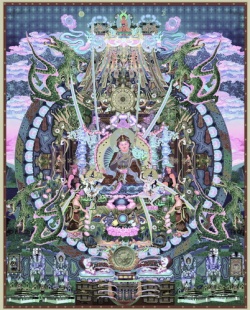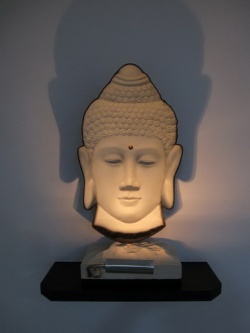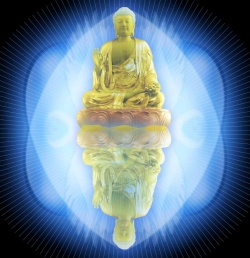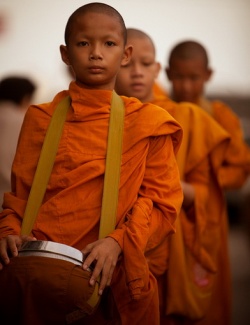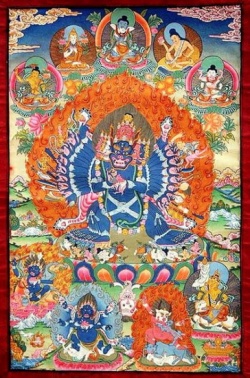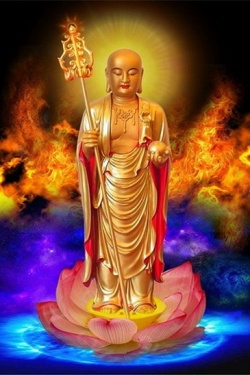Difference between revisions of "Debate in Tibetan Buddhism"
| Line 1: | Line 1: | ||
| − | + | <nomobile>{{DisplayImages|2653|2005|3389|3661|1312|1090|3459|1498|978|1740|4427|2165|882|1511|2581}}</nomobile> | |
<poem> | <poem> | ||
Revision as of 17:28, 27 October 2015
pgdharma:
Debating formed a huge part of the curriculum in most Tibetan monasteries. This was how the monks sharpened their critical skills and tested their ability to explain and debate various teachings.
I have witnessed “live” debates and I think it’s interesting. T
he monks were not allowed to have sutras handy so they had to memorized the entire texts and then remember the precise location of passages and examples they wished to use.
It is through this critical and logical skills and the excellent memorization ability that debates are useful for someone who is trying to become more aware of their thoughts and more in control of their actions. Thus before starting the debates, they will invoke the blessings of Manjushri.
Tibetan Debate
The distinctive form of Tibetan debate (rtsod pa) plays an important part of philosophical investigations in Tibetan intellectual communities.
It is central in the Gelug sect, in particular those earning their kenpo (mkhan po) degrees, though it is also practiced in other sects to varying degrees.
The practice involves a seated defender (dam bca’ ba) and a standing challenger (rigs lam pa). The roles are quite different; the defender must assert a thesis and attempts to defend its truth.
The challenger, however, asks questions in an attempt to get the defender to accept statements that are contradictory (for example, both “all colors are white” and “there is a color that is red”) or absurd (for example, “the color of a white religious conch shell is red”).
The challenger is not held responsible for the truth content of the questions; like someone raising an objection at a lecture, the challenger does not have to assert any thesis, but only aims to show that the defender is mistaken.
The debate begins with the challenger invoking Mañjushri, the bodhisattva of wisdom.
This invocation is variously interpreted, but can be seen most generally as a reminder to the debaters that they are aiming at wisdom, at finding out the truth about the subject.
The challenger then sets the topic of debate by asking a question to which the defender replies and reveals his thesis.
The challenger may ask questions to clarify the defender’s thesis or establish common assumptions or simply begin the debate.
During the debate, the challenger raises questions of a particular form; a complete question is one that contains a subject, predicate, and a reason.
For example, the question “(Do you agree that) the subject, Socrates, is mortal because of being a man (?)” ascribes a predicate (being mortal) to the subject (Socrates) in virtue of a reason (being a man).
When an element is omitted or ambiguous, the defender is allowed to clarify, but upon receiving a complete question, the defender has three possible replies:
1. “I accept” (’dod)
2. “The reason is not established” (rtags ma grub)
3. “It does not pervade” (ma khyab)
If the defender thinks that the proposed relationship between the subject, predicate, and reason holds, then she responds with “I accept.”
When the subject does not correspond to the reason, the defender asserts that the reason is not established.
For example, “Socrates is mortal because of being an elephant” would warrant this reply because the reason, being an elephant, does not apply to the subject, Socrates.
The denial of pervasion, a Tibetan innovation that is not found in earlier Indian Buddhist debate system of Dharmak?rti, claims that the reason does not entail the predicate.
There are two kinds of failures of pervasion — one of uncertainty (ma nges pa) and one of contradiction or exclusion (’gal pa).
“Socrates is a philosopher because of being a man” is uncertain because some but not all men are philosophers; the reason, being a man, does not entail the predicate, being a philosopher.
“Socrates is a reptile because of being a man” is contradictory because the terms “men” and “reptile” are exclusive; there are no men that are reptiles.
Source: http://www.iep.utm.edu/tibetan/
Jessie Fong:
I have experienced the live debates among the monks in the monasteries. It was lively and full of participation. But I did not understand a word of what went on. Those that I witnessed were rather "formal" i.e. they were about teachings.
I came across this and was wondering if such topics were also part of the debates that I came across:
One of the funny examples of such a debate is:
Does a farmer have a tail?
No, of course not
Does a farmer have a cow, a horse or a dog?
Yes.
Then a farmer has a tail!
Source(s):
http://viewonbuddhism.org
ratanasutra:
I'm fortunate to see the monks debate in traditional way in the monastery twice, even though i did not understand what they were debate about? but from the expression of the two sides of the monk really shown that they have to concentrate and think how to answer another in order to win the debate session.
And i also witnessed the Debate of my teacher with Dharma brother, the sound of clapping hand really made me excited and think of how to answer the questions even though i not in the debate.
Below here is how the debate and what is the meaning of debate actions for most of us who did not have a chance to debate before so that we will be able to understand it in future when we come across the debate.
The Debate
Debate is an integral part of a Tibetan monk’s training, and is an effective means of expanding the mind, increasing mental sharpness, developing analytical capacity, and gaining internal clarity.
There are two parties to the debate: a defender and a questioner, each with clear roles and strict rules of behavior which assure an orderly exchange of questions and answers. The defender is usually a novice, while the questioner is a more experienced debater.
Debate Style
The style of the debate follows a precisely choreographed routine beginning with a ritual invocation of Manjushri, the boddhisattva of wisdom, in a loud high pitched tone.
Then the questioner, who is standing, begins the questioning in a very low and barely audible voice. He bends gently forward toward the defender, who is sitting, as a sign of humility and respect.
At this point, the questioner is wearing his robe in the customary style, with the left shoulder covered, and the right shoulder bare.
These initial gestures and soft speech are part of a skillful strategy designed to bring about a false sense of security in his opponent.
The defender presents his thesis.
The questioner raises doubts. As the back and forth exchange of questions and answers progresses, the debate grows increasingly animated, impassioned, and physically intense, with plenty of forceful clapping and spirited verbal exchanges.
If the questioner has been able to draw the defender into making errors and contradicting himself, the questioner wraps his upper robe around his waist, as a sign of his understanding and control.
No longer bending forward, he stands tall and makes forceful sweeping gestures, clapping his hands loudly to stress the power and decisiveness of his arguments.
Finally, after 2.5 hours, it all comes peacefully to an end.
Meaning of the Physical Gestures
- Putting the left hand forward symbolizes closing the doors to the lower states of rebirth.
- Clapping 2 hands together represents the union of the two aspects of the path: wisdom and method (i.e., compassionate actions).
- Drawing back the right hand signifies a wish to liberate all sentient beings.
- Circling the opponent’s head three times with the right hand, while speaking in an decisive and forceful voice., “These are the three circles.” (‘di ‘khor gsum) indicates the the defender has made a mistake or a false argument.
- Wrapping the upper robe around the waist is a sign of understanding and control
- Standing tall, making forceful sweeping gestures, and clapping hands loudly signifies the power and decisiveness of the questioner's arguments.
Tenzin K:
The religious practitioner is compared to a patient and Buddha to a doctor.
Our kind teacher, the Buddha, administers the medicine of doctrine to sentient beings who suffer the illness of ignorance.
The purpose for debate and all Buddhist practice is to abandon the first two truths—suffering and origin—and to attain the latter two—cessation and path.
1. Purpose for Debate
A Tibetan monastery is the center for the teaching of the Buddha’s doctrine and a gathering place for those seeking inward peace and spiritual growth.
The central purposes of Tibetan monastic debate are to defeat misconceptions, to establish the correct view, and to clear away objections to that view.
To these ends, with great effort the monks of the Gelugpa Sect engage in debate diligently, seeking to learn well the words and to understand fully the meaning of the Buddhist doctrine (dharma).
Debate for the monks of Tibet is not mere academics, but a way of using direct implications from the obvious in order to generate an inference of the non-obvious state of phenomena.
The diligent debaters are seeking to understand the nature of reality through careful analysis of the state of existence of ordinary phenomena, the bases of reality.
Although reasoning has an essential and irreplaceable place on the path to liberation, even so, the Gelugpas place a tremendous emphasis on devotion.
When one visits a monastery, one sees that the main activity there is prayer, not study and debate.
Indeed, the monks identify the limits of reasoning, for even this essential component is to be transcended by the development of direct perception.
Reasoning itself and the inference it produces are not the actual antidotes to cyclic existence. Only direct realization of selflessness—the wisdom realizing emptiness (sunyata)-- is able to eradicate the foe of ignorance.
2. Practice of Debate
A monk hears teachings on topics of debate; then he reads the texts, memorizes the definitions and divisions; and then on his own, thinks about the meaning of what he is studying and meditates (analytical meditation) on its implications.
After this preparation, he is able to debate the topic with others. He puts forth his own view or understanding of a point of doctrine, and others raise objections to that view.
Similarly, one raises objections to others’ interpretations or understandings.
Although the monk may become very excited and object vigorously and vehemently to the views of his opponent in a debate, the purpose for his debate is not to defeat and embarrass an opponent, thereby gaining some victory for himself; rather, the purpose is to help the opponent overcome his wrong view.
3. Course of Study
The monks practicing debate study within a well-developed system beginning with basic logic and working up to the great texts of India, both the sutras and commentaries.
Monks studying in the colleges of the Gelugpa Sect work toward the Geshe degree.
In order to attain this, a monk must pass through a rigorous program of studies consisting of fifteen or possibly sixteen classes, some lasting for two years each.
a. Collected Topics of Valid Cognition (three classes)—the Introductory, Middling, and Greater Paths of Reasoning. (Parana)
b. Perfection of Wisdom (five classes). (Prajnaparamita)
c. Middle Way (two classes). (Madhyamaka)
d. Discipline (two classes). (Vinaya)
e. Treasury of Knowledge (two classes). (Abhidharmakosha)
Beyond these classes devoted to particular topics, there are two retainer classes, Kar-um and Hla-ram, in which the monks engage in lengthy review prior to their examinations for the degree of Geshe.
All told, a monk typically studies from twenty-two to twenty-six years to achieve this degree.
4. Actual Debate Session
An actual session of debate involves two people, a Defender who sits and gives answers to the Challenger who stands and asks questions.
The Defender puts forth assertions for which he is held accountable.
The Challenger raises qualms to the Defender’s assertions and is not subject to reprisal for the questions he raises. The debates usually take place outside in winter as well as in summer.
The daily schedule of the monasteries re-established in India include two hours of debate in the morning and two hours in the evening after dinner, although advanced classes may extend these sessions.
The disputants come to the debating courtyard with no aid but their own understanding.
One does not peruse books at the time of debating and books may not be brought to the debating courtyard.
There is a joke among debaters that if one has studied a topic and knows where to find the information in a text or in one’s notes but is not able to explain then such a person “has his learning in a box.”
Rather, the debaters must depend on their memorization of the points of doctrine—definitions, illustrations, and even whole texts—together with their own measure of understanding gained from instruction and study.
At the opening of a session of debate, the standing Challenger claps his hands together and recites the seed syllable of Manjushri, “Dhih”.
Manjushri is the manifestation of the wisdom of all the Buddhas and, as such, is the special deity of debate.
In debate, one must have a good motivation, the best of which is to establish all beings in liberation.
Upon first seeing a debate, the most striking characteristic is the hand gestures.
When the Challenger first puts his question to the sitting Defender, his right hand is held above the shoulder at the level of his head and the left hand is stretched forward with the palm turned upward.
At the end of his statement, the Challenger punctuates by loudly clapping together his hands and simultaneously stomping his left foot.
Then he immediately draws back his right hand with the palm held upward and at the same time, holds forth his left hand with the palm turned downward.
This motion of drawing back and clapping is done with the flow of a dancer’s movements.
Holding forth the left hand after clapping symbolizes closing the door to rebirth in the helpless state of cyclic existence.
The drawing back and upraising of the right hand symbolizes one’s will to raise all sentient beings up out of cyclic existence and to establish them in the omniscience of Buddhahood.
The left hand represents wisdom—the actual antidote to cyclic existence.
The right hand represents method—the altruistic intention to become enlightened, motivated by great love and compassion for all sentient beings.
The clap represents a union of method and wisdom. In dependence on the union of method and wisdom, one is able to attain Buddhahood.
Positive Change:
The Tibetan style of debate is not what you might expect.
It's physically intense and mentally demanding, characterized by emphatic movements, such as foot stomping, loud clapping and hand gestures.
There's also a "defender" and a "challenger." So how does an aggressive exercise fine-tune your mental skills?
I liken it to physical exercise e.g. going to the gym to tone up and get fit.
Similarly, this age old method of training one's mind to 'think on the go', to be quick in responses, to be train the mind to have logical understanding from either side to have a better understanding of an issue.
One must always view a topic from both sides in order to make any conclusions and the Tibetan style of debate does exactly that in a very swift and demanding aspect!
